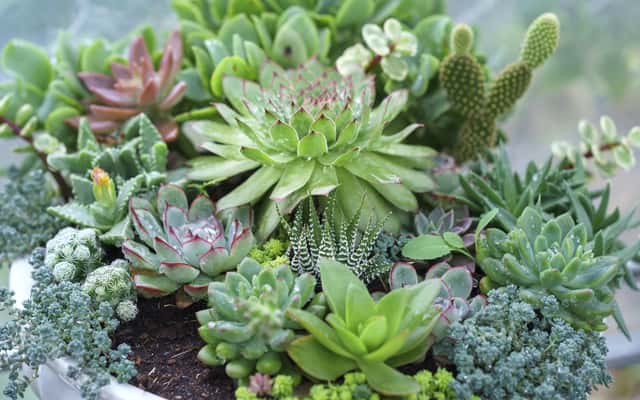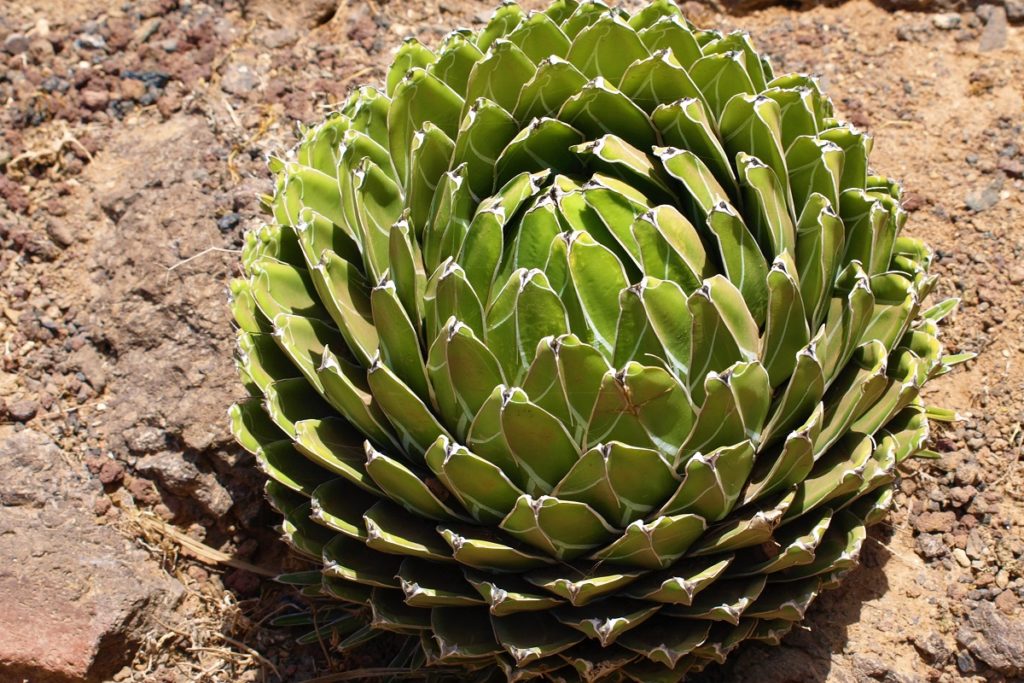
Cacti are plants that are very admirably adapted to harsh conditions. They are also very decorative, which is why we often and willingly grow them at home. They are native to the Americas, and apart from these continents, only one species occurs naturally elsewhere on Earth. Their resilience and the will to survive have made them quickly invasive and actively combated in some places on earth.
Cacti are succulents, i.e. plants that have developed the water tissue necessary for water storage. As a result, they are perfectly adapted to function in areas where access to water is limited.
Cacti come from America, where they grow in deserts, but also in wet forests. Their seeds are spread by birds. Currently, they also grow wild in Africa, Madagascar, and Ceylon.
While cacti are now considered ornamental plants, they were once more practical. You could eat their fruit, make soup, eat like a vegetable, and still make candies out of others. Cacti that have their spines removed are fodder for cattle. Old cacti that are already woody provide strong wood for construction; other varieties are used to make medicine.
Our home cacti are only a miniature of the large ones. For proper care, cacti need soil, or rather a mixture, which consists of frame soil, turf soil and sand, as well as limestone and charcoal in small pieces. We pour the soil into pots, un-watered clay bowls or wooden boxes. It is important that the dishes have holes in the bottom. The pot cannot be too small or too big. Young plants should be transplanted every year, and larger plants every 2-3 years. This is done in March-April.
- Cacti are characterized by extremely low water losses; their daily transpiration may be as low as 1/9300 of the plant weight.
- Cactus originates from the Greek name Kaktos. Kaktos is a Spanish artichoke or the “prickly plant of Sicily” as many refer to it in Greece.
- About 2,000 species of cacti can be found on Earth.

- Cacti come from the Americas; they belong to the stem succulents.
- The only species naturally occurring outside the Americas is Rhipsalis baccifera, it can be found in Africa, Madagascar, Sri Lanka, India, and Nepal.
- These are plants adapted to dry conditions, most often found in mountain and semi-desert areas.
- There is a cactus native to Morocco that is hotter than any chili pepper known to man.
- Dragonfruits come from a cactus.
- Cactus spines are modified leaves, and that photosynthesis is performed by the stalk instead.
- Cacti have certain acoustic properties, meaning you can literally play the cactus.

- The organ pipe cactus is usually pollinated by bats.
- A characteristic feature of cacti is having an areola and a spiral or acyclic arrangement of flower elements.
- Areolas are a shortened shoot with a conductive beam extending from the central beam. Thorns, shoots and, in most cacti, also flowers and fruit grow from the areola (except for the genus mamilaria). If the cactus growth tip dies, a new shoot grows out of the areola.
- Cacti can be found at an altitude of up to 4,700 m above sea level.
- The greatest variety of cacti is found in the tropical regions of the Americas.
- Cacti are highly invasive species and humans are responsible for their spread.
- They can now be found on all continents except Antarctica as feral plants.
- There is a species of cactus indigenous to Chicago.
- A Saguaro cactus takes 10 years to grow an inch and 200 years to grow full size.

- There is a species of cactus that lives so far north in Canada that it is north of the southern edge of Alaska.
- In the nineteenth century, several dozen species of prickly pear were brought to Australia for gardening purposes, which after about 40 years became a common weed there.
- The feral varieties of the prickly pear can also be found in South Africa. The main cause of the invasiveness of these plants is their fruit, which is a food liked by birds. The fruit has a large amount of seeds and is easily transferred to new areas.
- 1749 out of 1750 species of cacti are native to only The Americas.
- Cactus root systems can be very extensive.
- Most cacti in winter, that is from October to March, do not require watering.

- The most common cacti cultivated at home are: Koryfanta, Ferocactus, Echinopsis eyriesii, Echinocactus grusonii, Prickly pear, Gymnocalycium, Mammillaria and Rebucja.
- There are several to several thousand seeds in cactus fruit. They are most often oval, pear-shaped, lenticular or kidney shaped.
- A cactus plant has spines instead of leaves, and this is nature’s way to help the plant survive. The spines come in a variety of forms, such as: Awl-like, Straight, Curved, Needle-like, Bristle like, Hair-like, Round, Hooked.
- Cacti life circle lasts from 15 to 300 years, depending on the species.
- Cacti come in hugely different sizes. One of the largest species can get 66 feet (20m) high and weigh up to 4800 pounds (2177kg) when fully loaded with water. Smallest species are usually just a few inches high.
- Cacti are used to living in dry areas. Therefore, they can store a great amount of water and store it in stems and roots for surviving drought periods. Besides water storage, stems are also used for photosynthesis, a process of producing food from sunlight and carbon dioxide.

- Roots of the cactus can reach up to 7 feet (2.1m) in diameter, although being just a few inches in the ground. The water is easily passed through the sand, so cacti are focused on low depth of the roots, but vide diametre, to gather as much water as they can.
- Cacti have cylindrical, tree-like, rounded, starfish or irregular shapes. Their surface can be flat or covered in ridges.
- The colors of cacti can be green, brown-green, or blueish. On a surface, cactus produces a waxy substance, which prevents loss of water via transpiration (evaporating of the water through small holes during high-temperature periods).
- Cacti recruit ants as bodyguards. The cactus plants produce four types of nectar to attract ants.
- Cactus Is Not Always Green. The plants come in a variety of colors: Red, Yellow, White, Purplish, Orange.

- Cacti can survive very well in the tropics, and even in snow-clad mountains such as the Alpines. As you may know, the cactus is a highly adaptive plant, and this can adapt to different climates.
- All Cacti Are Succulents, But Not All Succulents Are Cacti
- Cacti come in different shapes and sizes. Some are just a few inches tall, while others get up to 66 inches in height.
- Most plants will just die off at the slightest sign of neglect. Believe it or not, but it is possible to revive a cactus that has gone without water for months, just by watering it.
- Cactus can grow up to six stories tall, and so you can imagine the weight. In 1982, a man in Arizona tried to destroy a cactus by repeatedly shooting at it. The plant eventually fell on him and killed him instantly.
- Instead of leaves, cacti have spines. They can be soft or rigid, curved or straight, scattered or somewhat arranged. Spines can grow up to 6 inches (15 cm) long.

- Each spine grows from the areole. Areoles are bumps or nipple-like structures on the surface of the cactus.
- Spines works to fulfill two major roles- they prevent the plant from losing too much water via transpiration and they keep animals away.
- Cactus spines are used in the production of the hooks, needles, and combs. Some cacti even can be used as food.
- You can safely drink water from the cactus. However, it has a higher density than regular, tap water.
- Through the year, cacti have dormant periods and periods of intense growth and blooming. When in the growth period, cactus needs enough water and sunlight. These periods usually last much shorter than dormant ones.
- Bees, butterflies, moths, bats, and hummingbirds are the main pollinators of the cacti.






Hi very interesting web site. I learn something new in all the pages.
Thanks for sharing
Thank You so much!!! that’s was my idea..